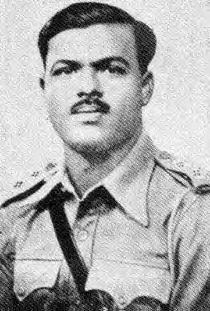Subramanian
- Date of death:
- February 24th, 1944 (Mignano, Italy)
- Mentioned on:
- Sangro River Cremation Memorial
- Nationality:
- British-Indian
Biography
Do you have more information about this person? Inform us!
- Period:
- Second World War (1939-1945)
- Rank:
- Subadar (Captain)
- Unit:
- 11 Field Park Company Madras Sappers and Miners, 4th Indian Infantry Division, British Indian Army
- Awarded on:
- June 30th, 1944
---
"On the 24th February, 1944, Subedar Subramanian took charge of a mine clearing party to search for an officer who was thought to have walked into a minefield near MEGNANO. Subedar Subramanian was operating the mine detector with a mine behind him marking a path with white tape when suddenly a small explosion occurred. Subedar Subramanian realized at once that the man behind him must have trodden on an anti-personnel mine and that within four seconds the canister would be thrown into the air and explode with great violence. Without the slightest hesitation and instead of flinging himself to the ground where he would have had a good chance of escaping unhurt, Subedar Subramanian sprang towards the man behind him and deliberately flung himself on top of the mine, at the same time endeavoring to push the other man aside. The force of the explosion was largely neutralized by Subedar Subramanian's body, causing him such severe injuries that he died a few minutes later. His act of unsurpassed bravery, performed in an instant, and without the excitement of battle, was beyond all praise and in keeping with the best traditions of the Indian Army.
There is no doubt that Subedar Subramanian realized when he heard the small explosion that only the immediate action of placing his own body on top of the mine could save the lives of the remainder of the party who were all inside the danger area.'
- Period:
- Second World War (1939-1945)
- Period:
- Second World War (1939-1945)





